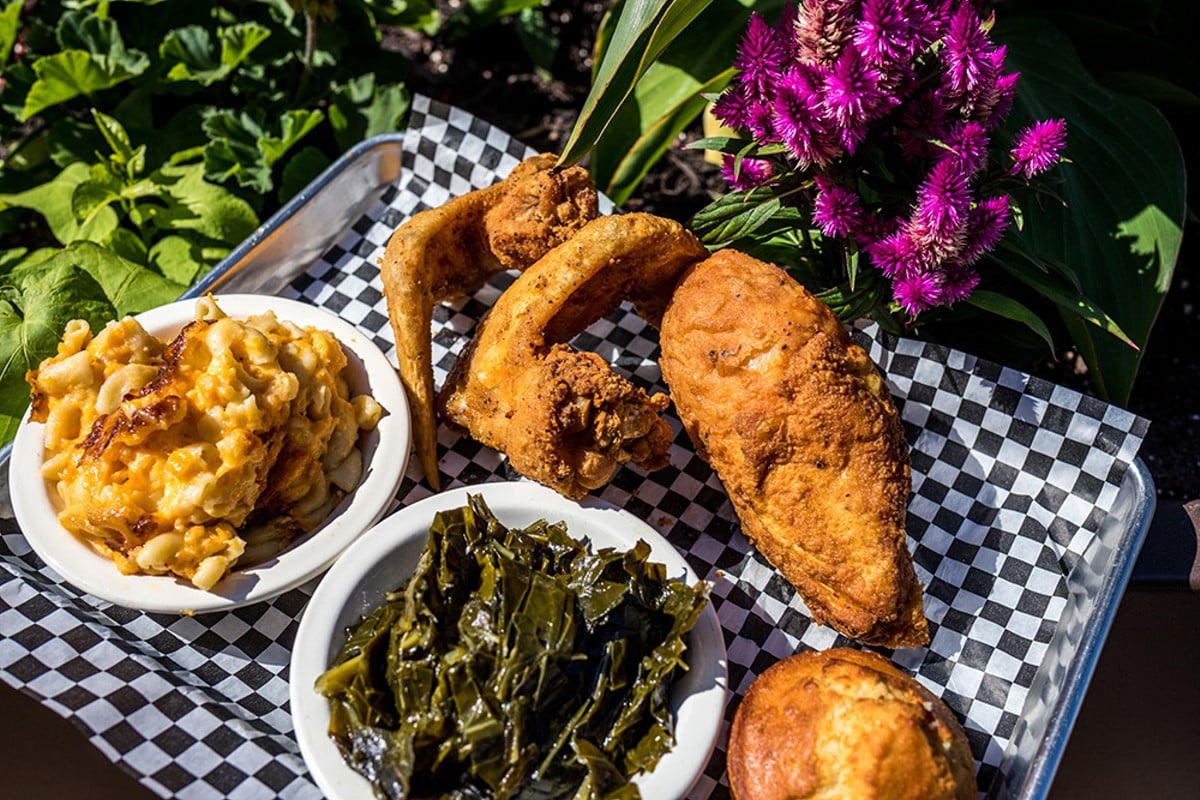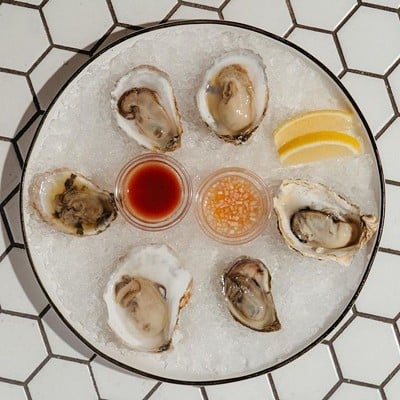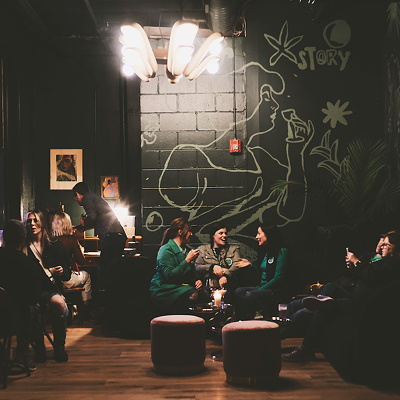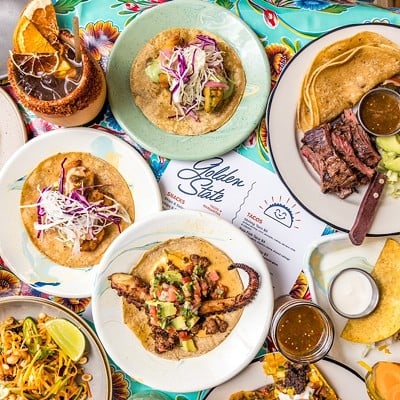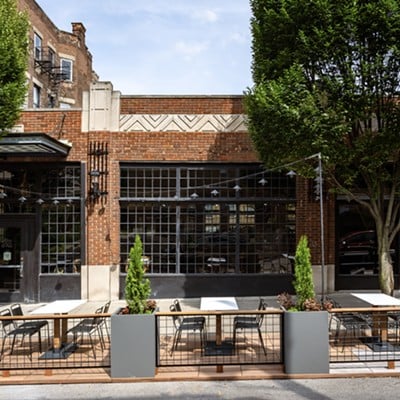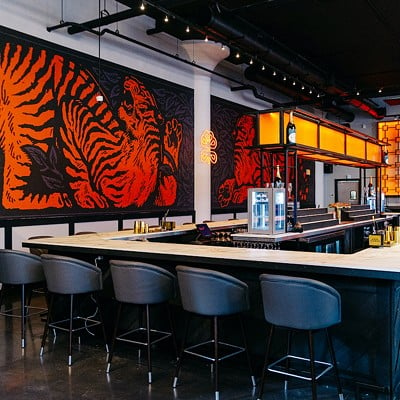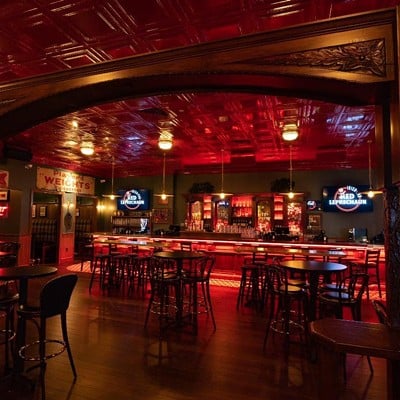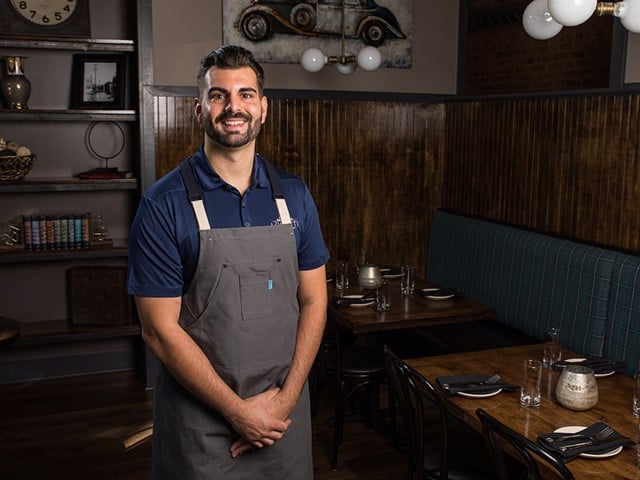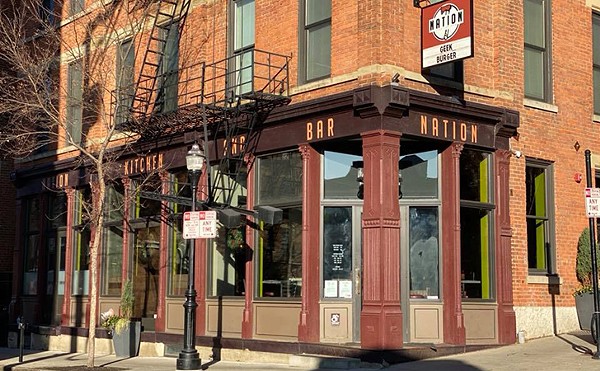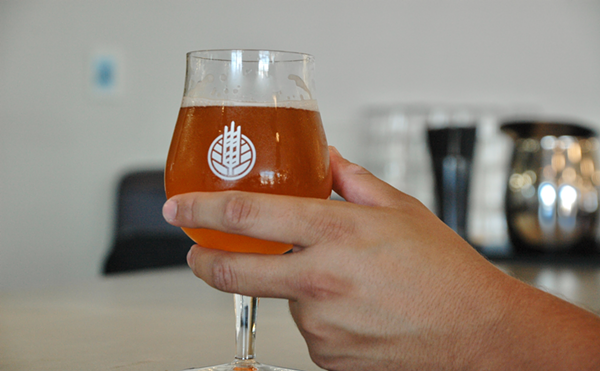This story is featured in CityBeat's Jan. 10 print edition.
On the eve of every new year, prognosticators try to peer into the future and see what the coming 365 days will hold. In the restaurant industry, this forecast of trends runs the gamut and is largely dependent on who you talk to and when you talk to them — especially if they’re mostly PR professionals who have never mise en placed. National publications try to forecast for the nation, and industry-specific advocacy groups, like the National Restaurant Association, forecast according to their members.
Eight Greater Cincinnati/Northern Kentucky-area food service professionals, including chefs, sommeliers and a local food influencer, gave us their well-earned two cents on the trends that will infiltrate industrial and residential kitchens alike. Read on below to start planning your 2024 eats.
“Newstalgia”
Since 2020, restaurants have been plagued with any number of setbacks — financial, labor, economical, etc. The era of fanciful and exotic dishes has taken a backseat in place of keeping the lights on. This coming year, our panel of industry voices sees a more refined return to comfort and stability, in the kitchen, on the plates and in seats.
“I definitely think it’s going to be a year of stability,” said Kayla Robison, a local chef and consultant, most recently at Arnold’s Bar & Grill. “Last year and the year prior [were years] of closure. We did still have some good openings. Those of us who are already in the business and in the grind are going to be at this point of stability.”
As food prices skyrocket at the grocery store, Robison sees a turn back to the recipes that fed the generations before us, when a little went a long way.
“One way to make things even more affordable is doing what the generations prior to us did, making things from scratch, using pantry ingredients,” she said. “You’ll have entrees that are composed of simpler ingredients, that still have this incredible experience and flavor. That labor of love is really going to come through more and more and we’re going to get to taste it.”
Places like Arnold’s have always been about comfort food.
“We do try to follow some trends, but lead with comfort foods,” said Chris Breeden, owner of Arnold’s. “So that way it keeps us from staying too stale. Basically, we do that by hiring people with fresh ideas and allowing them to run with whatever their ideas are.”
Take the Arnold’s short rib and grits. It’s a spin on shrimp and grits, but with prime rib, which Breeden calls a “hot commodity” in the food industry right now. The New York Times’ own food trend forecasting sees soup as the top dish sweeping the nation in 2024.
“I think that comfort food is definitely a thing we’re going to keep moving towards,” said Emma Cotter, director of operations and sustainability with Sleepy Bee. “I think we see that both in embracing and reimagining classic dishes, and then also I think that’s where a lot of different regional and global cuisines can have spotlight moments. Each culture’s comfort food has been getting a lot of traction the last few years. The pandemic really pushed us all back to comfort food.”
Cotter also noted the success fast food outlets are experiencing, as what were once cultural cliche spots like Applebee’s and IHOP start to cash in on what has turned into a cultural cache.
“These suburban chains are having better business than they’ve had in a decade, so predictability and comfort is definitely something that people seem to be gravitating towards,” she said.
Christian Gill, a chef and consultant based in Northern Kentucky who has competed on several TV cooking shows and runs Food Fight 513 with Robison, agreed.
“You’re going to see ‘newstalgia,’” said Gill. “Newstalgia is basically new takes on ‘70s, ‘80s classics, even into the ‘90s, which is triggering for us 30-something-olds. A lot of, ‘in with the old, but in a new way,’ with a new twist on it. A reimagining of classic dishes — Salisbury steak, ambrosia, weird shit from the ‘70s, Jello; gelatin in general will make a big re-splash.”
Vegetables are in vogue
Vegetables, too, are coming back. Not that they ever really left menus, but veggies are again appreciated for what they are, not just what they can become.
“There’s a movement for making plant-based foods plant-based again,” said Robison. “Essentially, the imitation meat is starting to go away. People are really challenged with making a vegetarian entree or vegan, but in a good way. Chefs are going to have to challenge themselves — let’s turn a head of cauliflower into something delicious and not ground up to have the texture of chicken.”
Food blogger/personality Dione Wu, of @drinkingdiningdione on Instagram and TikTok, agreed.
“There’s definitely more of an emphasis on healthy,” said Wu. “I think because people are becoming more health-conscious, they’re seeing what other options are available. That’s not to say they would eliminate meat from their diet, but I think they’re trying to incorporate more plant-based foods, just eating more fruits and vegetables honestly.”
Wu started her food-centric Instagram when she moved to Cincinnati from Columbus in 2015 as a way to document and share her experiences in her new city. She is passionate about getting people out of their restaurant ruts and trying all the new and exciting options available in Cincinnati.
“There’s one newer plant-based restaurant coming to Court Street downtown, AV [All Vegan],” said Wu. “I think plant-based restaurants are going to be popular.”
Paul Weckman of Otto’s Restaurant Group agreed.
“There’s been a lot of chatter about people moving away from fake substitute meat products and really this awakening that, hey, diners just want really good vegetables, let's make them more center of the plate,” he said. “Let's do different things with them.”
Weckman and his wife, Emily, operate the Otto’s group of five restaurants, which include Otto’s, Frida, The Standard, Larry’s and Mama’s (which has a rooftop bar opening in 2024), all located in the Mainstrasse area of Covington. They just purchased a farm in southern Indiana, and Weckman said he’s looking forward to spending weekends out there and exploring growing their own vegetables there, especially hard-to-source ones, for the restaurant group.
Even the smallest turns toward sustainability like this are good for the industry and the planet. Sleepy Bee has gone a step further, achieving B Corp Certification, which is a distinction for businesses that have altered certain methods to be more socially and environmentally responsible. Sleepy Bee is the only restaurant among only eight local businesses to do so.
“It helps underscore our story for our guests and makes it easier to talk about,” said Cotter. “To keep framing the language of how and why around sustainable sourcing, and especially around humane and equitable treatment of our team. As we go forward, we want to just keep making sure we tell that story, alongside serving delicious food, because that will give us the best grounding from which to pivot and evolve as a business as we go into this relatively uncertain global time and future.”
Back-to-basics booze and beer
Along the nostalgic lines, our panel of experts foresees a return to simplicity in the drinks we imbibe in 2024, too.
“Most people just want something that tastes good,” said Breeden. “Craft beer is becoming more focused to the everyday person, so they’re dialing back a lot on their crazy robust flavors and trying to just [have] good-tasting, approachable beers.”
Mike Stankovich, founder and owner of Mid-City Restaurant and the bar Longfellow, agreed.
“I’ve noticed that IPAs have kind of fallen off,” he said. “Longfellow has always had a devout following of European beer drinkers because we have German imports, [and] we just picked up an Ethiopian lager, [but] our IPA sales have kind of fallen off really hard.”
Same goes for liquor.
“With cocktails, I might be skewed on this because at Mid-City our list is only classics, but [I think] people are more inclined to order a well-made classic cocktail than maybe a food-based cocktail,” said Stankovich. “I think money’s tight so people are going to go with tried-and-true cocktails than going out on a limb and trying some insane concoctions.”
There’s a comfort to knowing the team behind the bar, and trusting them to help you make your best possible decisions for the night’s drink (or drinks).
“People are going to go to the smaller joints where they have a rapport,” he said. “Hart and Cru is a good example. People trust them to know their taste buds and buy their wine for them — there’s less risk involved.”
Speaking of Hart and Cru, sommelier Brittany Marsh thinks the stories behind the products are one of the biggest driving factors in consumption and purchase and hits on the next trend.
Personalities, stories and experiences
“At Hart and Cru specifically, we’re a European wine bar and we love celebrating the small producers,” said Marsh. “What our job is is telling stories about these producers — it’s more talking about the people behind the wine, it’s really cool to share the stories and [winemakers’] eccentric qualities. People can relate to stories.”
Wine can be a very intimidating thing to order at a restaurant or wine bar with an extensive list of unfamiliar names and types. Marsh also serves as director of education at Hart and Cru and is dedicated to helping people learn about and enjoy wine.
“I think people are really opening up to trying new things,” she said. “People order what they know, but this current generation, a lot of people are challenging it. [They] want to try the strangest thing you have by the glass, the most esoteric, weirdest, funky thing you have.”
Marsh predicts a huge focus on winemaking regions like Portugal and the Canary Islands that tend to fly under the radar in the U.S. where availability has been slow to open up. Locally, it’s once more about people.
“I do think a lot of the local entrepreneurs and what they're doing with wine stands out more than the wine that’s made here,” she said.
She pointed to former city councilwoman Yvette Simpson’s foray into winemaking, the recent collaboration between Oakley Wines and Field Recordings, and the vibes at small wine shops like Iris Read.
Stankovich agreed.
“Prior to the pandemic, there were a handful of bars opening up that were specifically [chef] owned,” said Stankovich. “You had these bars popping up that were rooted in the owners’ personalities. So I got kind of worried when the pandemic happened that a lot of the smaller people would go out of business. I’m pleasantly surprised that post-pandemic and going into 2024, we have a lot of that happening again. I’m happy to see it kind of going back to these chef-driven restaurants.”
A smattering of these incoming restaurants: the recently opened Wildweed, which started as a pop-up and has grown into its own brick-and-mortar, and is run by David Jackman, who was the pearl in the center of the short-lived oyster that was PearlStar. Colette OTR, a “mostly French” restaurant from chef Danny Combs, who previously helmed the kitchens of both Boca and Sotto. Aperture, a long-awaited venture from chef Jordan Anthony-Brown, finally makes its debut in Walnut Hills.
Other trends noted by our esteemed panel:
- More pop-ups leading to more brick-and-mortar transformations, a la Wildweed. Robison is doing a pop-up at Arnold’s on Jan. 18.
- Food halls, like The Gatherall, Element Eatery, and Oakley Kitchen, remain a popular and viable option for both consumers and potential restaurant operators to try something new.
- Lunch as the new happy hour, especially in downtown Cincinnati, where several return-to-office mandates by business district cornerstones, like Kroger and P&G, mean a return to eating lunch out in the city center. On Court Street alone, Chef Hideki Harada (of Kiki in College Hill and Sen in Findlay Market) is opening Daruma, Derrick Braziel is opening taco restaurant Pata Roja and Stankovich has Mid-City eyeing a potential lunch service.
Follow us: Apple News | Google News | NewsBreak | Reddit | Instagram | Facebook | Twitter | Or sign up for our RSS Feed

